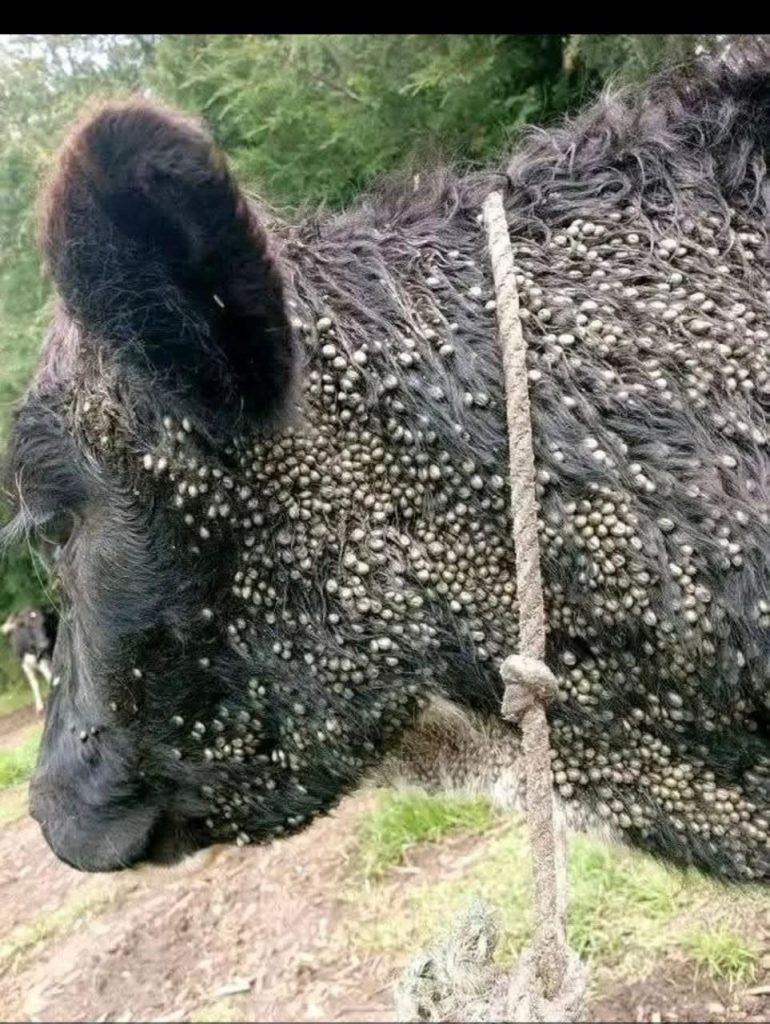Urgent Alert: Heavy Tick Infestation in Cattle – A Serious Threat to Livestock Health

Image Description:
The image above shows a disturbing case of severe tick infestation on a cow. Thousands of ticks have attached themselves to the animal’s skin, particularly around the neck and shoulder region. This level of infestation is not only distressing to look at but also extremely dangerous to the animal’s health and the farmer’s livelihood.
—
Understanding the Threat of Ticks in Livestock
Ticks are external parasites that feed on the blood of livestock, transmitting deadly diseases and causing immense discomfort, weight loss, and even death in extreme cases. In this photo, the infestation has reached a critical level that demands immediate veterinary intervention.
What Ticks Do to Your Animals
Blood loss: Heavy infestations lead to anemia, weakness, and decreased productivity.
Disease transmission: Ticks spread serious diseases such as:
East Coast Fever (ECF)
Anaplasmosis
Babesiosis
Heartwater
Skin damage: Constant biting causes wounds, skin infections, and reduces the quality of hides.
Stress: Infested animals are restless, feed less, and may stop producing milk.
—
Possible Causes of Infestation
Infrequent or ineffective spraying/dipping
Overgrown bushes or tall grasses near grazing areas
Inadequate animal inspection routines
Use of expired or poorly stored acaricides (tick-control chemicals)
—
Immediate Actions Farmers Should Take
🧪 1. Veterinary Intervention
Contact a qualified veterinary officer immediately. The cow in the image is at risk of developing secondary infections and other complications.
🧴 2. Effective Tick Control
Use a recommended acaricide (tick-killing chemical) as per veterinary advice.
Apply through spraying, dipping, or pour-on methods.
Rotate chemicals to avoid resistance buildup.
🧼 3. Clean the Environment
Slash overgrown bushes and grass near the homestead and grazing fields.
Treat cowsheds and resting areas to eliminate tick hiding spots.
📅 4. Regular Inspection and Control Routine
Inspect animals weekly for tick presence.
Include tick control in your monthly or bi-weekly animal care plan.
—
Long-Term Prevention Strategies
Adopt an integrated tick control approach: combine chemical, environmental, and management strategies.
Introduce tick-resistant breeds where feasible.
Train farm workers on early detection and proper acaricide use.
Collaborate with local vets and fellow farmers to coordinate control programs.
—
Final Word to Farmers
Let this image serve as a wake-up call. Tick infestation is not just a skin-deep issue; it is a gateway to loss of productivity, animal suffering, and financial strain. Do not wait until your animals are this severely affected.
✅ Take action now.
✅ Protect your herd.
✅ Consult your vet today.
Get tick control product at Amazon using this link https://amzn.to/4kKmr8L

